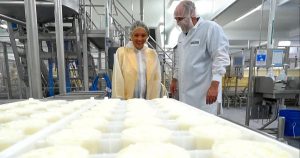
“I expect Europe to be down the first half of the year, New Zealand to be flat following four to five years of decline, and I expect weakness in the United States through the first quarter,” Lucas Fuess, senior dairy analyst at Rabobank, told attendees Feb. 27 at the International Sweetener Colloquium in Aventura.
Fuess attributed the lower milk supply to weather, tight profit margins, and sustainability and regulatory issues impacting output. The United States alone had seven consecutive months of lower production.
“Our milk cow numbers in the United States are the lowest since 2019, and the tight profit margins are leading farmers to shed cows, and replacements are at decade level lows,” he said, noting that milk cow replacement heifer numbers were limited and that high prices for beef were driving more dairy cows to slaughterhouses.
But despite the tight supply, Fuess said he is not expecting bullish swings in the market.
“The last time this happened, we did see a significant bullish reaction driving dairy prices to record levels in 2022, but we haven’t seen the supply pull back as much then, and also demand is weaker,” he said. “The theme for 2024 is slow but steady price increases as demand firms and tightness lingers. There’s likely more upside than downside, but it won’t be overwhelming this time.”
Helping with the upside is the prospect of better profit margins given the expectation for higher milk prices but lower feed prices.
Feuss said Class IV milk (used for dairy products such as butter, dry products and evaporated or sweetened condensed milk in a consumer-type packages) are expected to maintain a premium throughout 2024 over Class III milk (used to make products such as cream cheese, other spreadable cheeses, anhydrous milkfat, butteroil and hard cheese that may be shredded, grated, or crumbled) mainly due to higher cheese production.
“All dairy dollar investments are moving into the cheese landscape,” Feuss said.
Despite lower milk access, he said milk was expected to flow liberally to cheese processors given the industry’s rampant growth, including new cheese plants opening this year and in 2025.
Ample supplies of cream from cows producing plenty of milk, however, were not enough to tamp down global butter prices, which domestically reached record highs multiple times in recent years (most recently in early October 2023) and have the potential to reach fresh all-time highs again in 2024. Feuss said production struggled to keep pace with the robust demand for butter in both the United States and Europe.
For dry dairy products, Feuss said nonfat dry milk prices have been rangebound for the past several months despite stocks being at their lowest levels since 2015. But without demand, there was unlikely to be any bullish response to the tightness, he said. Dry whey, however, has been stronger due in part to firmer demand for higher protein products.
























